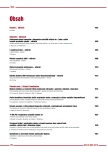The importance of anamnesis in differential diagnosis of reflex and cardiogenic syncope
Authors:
P. Mitro; P. Kirsch; Z. Zausinová
Authors‘ workplace:
III. interná klinika Lekárskej fakulty UPJŠ a FN L. Pasteura, Košice, Slovenská republika, prednosta doc. MUDr. Peter Mitro, Ph. D.
Published in:
Vnitř Lék 2006; 52(11): 1030-1036
Category:
Original Contributions
Overview
The aim of the study was to establish the difference in the anamnestic data in cardiogenic and reflex syncope during a systematic gathering of data using a structured questionnaire and to measure the benefits of structured clinical history in differential diagnosis of syncope.
Methodology:
70 patients with syncope of undetermined etiology (average age 51 years, 26 men and 44 women) underwent a standard diagnostic protocol procedure. Cardiogenic syncope was diagnosed in 16 patients (23 %), vasovagal syncope in 34 patients (49 %), in 20 patients (28 %) the cause of the syncope remained uncertain. Anamnestic data was collected through a structured questionnaire which contained 70 points.
Outcome:
Patients with cardiogenic syncope, as opposed to those with vasovagal syncope, tended to show higher age (68 vs 43 years, p < 0.001), higher occurrence of IHD (75 % vs 35 %, p = 0.008) and hypertension (62 % vs 29 %, p = 0.02). Cardiogenic syncope in the prodromal phase exhibited a more frequent feeling of weakness (43 % vs 14 %, p = 0.02), absence of the typical provoking factor (56 % vs 15 %, p < 0.001), unspecific occurrence during the day (81 % vs 41 %, p = 0.008), and weak pulse according to witness report (50 % vs 8 %, p = 0.01). There was a significantly higher incidence of visual disturbances in vasovagal syncope in the prodromal phase (47 % vs 19 %, p = 0.05) and sweating (29 % vs 6 %, p = 0.05), provoking factors often involved long standing on feet (66 % vs 25 %, p = 0.01) and hunger (29 % vs 0 %, p = 0.01), and paleness was often reported by witnesses as opposed to vasovagal syncope (91 % vs 31 %, p = 0.04). The rate of occurrence of palpitation and nausea in the prodromal phase was identical in both types of syncope.
Conclusion:
There exists a significant difference in anamnestic data of patients with cardiogenic syncope and those with vasovagal syncope. Detailed clinical history is a useful method in differential diagnosis of syncope.
Key words:
syncope – diagnosis – clinical history
Sources
1. Alboni P, Brignole M, Menozzi C et al. Diagnostic value of history in patients with syncope with or without heart disease. J Am Coll Cardiol 2001; 37: 1921–1928.
2. Brignole M, Alboni P, Benditt DG et al. Guidelines on management (diagnosis and treatment) of syncope-update 2004. Europace 2004; 6: 467–537.
3. Calkins H, Shyr Y, Frumin H et al. The value of the clinical history in the differentiation of syncope due to ventricular tachycardia, atrioventricular block, and neurocardiogenic syncope. Am J Med 1995; 98: 365–373.
4. Colivicchi F, Ammirati F, Melina D et al. Development and prospective validation of a risk stratification system for patients with syncope in the emergency department: the OESIL risk score. Eur Heart J 2003; 24: 811–819.
5. Colman N, Nahm K, Ganzeboom KS et al. Epidemiology of reflex syncope. Clin Auton Res 2004; 14(Suppl 1): 9–17.
6. Del Rosso A, Alboni P, Brignole M et al. Relation of clinical presentation of syncope to the age of patients. Am J Cardiol 2005; 96: 1431–1435.
7. Hamer AW, Bray JE Clinical recognition of neurally mediated syncope. Intern Med J 2005; 35: 216–221.
8. Kautzner J, Synkopa. In: Ascherman M. Kardiologie. Praha: Galén 2004: 1173–1181.
9. Kovac J, Skehan JD. Long-term monitoring of patients with a syncope of obscure etiology with an implantable monitoring device. Vnitř Lék 2000; 46: 328–331.
10. Kula S, Olgunturk R, Tunaoglu FS et al. Distribution of syncopal episodes in children and adolescents with neurally mediated cardiac syncope through the day. Europace 2005; 7: 634–637.
11. Martin GJ, Adams SL, Martin HG et al. Prospective evaluation of syncope. Ann Emerg Med 1984; 13: 499–504. 12. Mitro P, Szakács M. The influence of the passive phase shortening on the diagnostic yield of nitroglycerine stimulated head-up tilt test. Vnitř Lék 2005; 51: 1272–1276.
13. Praus R, Parizek P, Cervinka P et al. Syncope in ventricular tachycardia as a first clinical sign of patent ductus arteriosus in an adulthood. Vnitř Lék 2004; 50: 873–876.
14. Semrad B. The clinical symptoms, the diagnostics and the therapy of orthostatic intolerance. Vnitř Lék 2006; 52 113–114.
15. Sheldon R, Rose S, Ritchie D et al. Historical criteria that distinguish syncope from seizures. J Am Coll Cardiol 2002; 40: 142–148.
16. Soteriades ES, Evans JC, Larson MG et al. Incidence and prognosis of syncope. N Engl J Med 2002; 347: 878–885.
Labels
Diabetology Endocrinology Internal medicineArticle was published in
Internal Medicine

2006 Issue 11
Most read in this issue
- Male hormonal contraception
- Transfusion-induced immunomodulation and infectious complications
- Mitral regurgitation: are we able to properly time the surgical procedure?
- Massive pulmonary embolism – attempt at embolectomy following the failure of thrombolytic treatment
